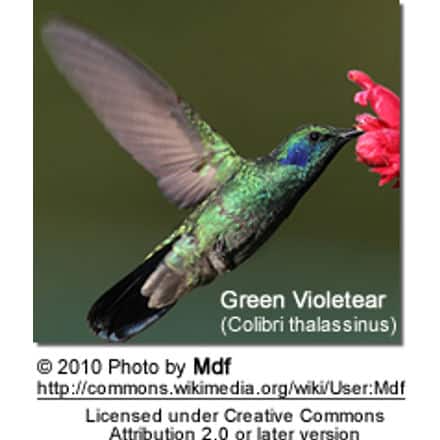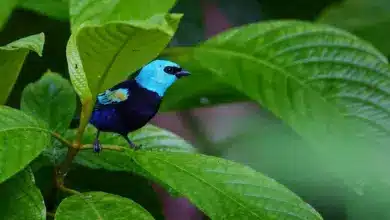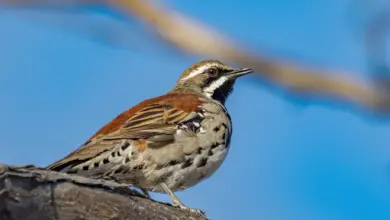Hummingbirds found in Minnesota, USA
Hummingbirds found in the USA (by U.S. State) … Canada … Mexico … Puerto Rico … Jamaica … Honduras
Hummingbirds found in Minnesota USA
Hummingbird Information … Hummingbird Species Photo Gallery
Following listed (with photos) are hummingbirds found in Minnesota.

Ruby-throated Hummingbirds, Archilochus colubris – Native – Usually arrive in the first week of May, with males usually being the first to show up to stake out their feeding territories. Most leave toward the end of September. Males usually depart first, and females and the young follow about two weeks later.
The male has a ruby-red throat, a white collar, an emerald green back and a forked tail.
The female has a green back and tail feathers that are banded white, black and grey-green.
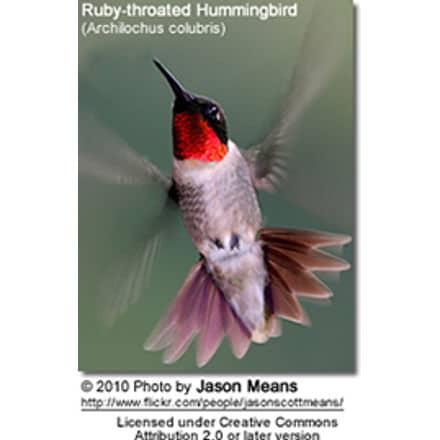
Rufous Hummingbirds, Selasphorus rufus — Accidental visitors (at least 13 records) … Like the Ruby-throated Hummingbirds, they usually arrive in the first week of May, with males usually being the first to show up to stake out their feeding territories. Most leave toward the end of September. Males usually depart first, and females and the young follow about two weeks later.
These hummingbirds are usually found in gardens and at feeders. These birds are fearless, and are known for chasing away other hummingbirds and even larger birds, or rodents away from their favorite nectar feeders and flowers.
Males can easily be identified by their glossy orange-red throats.
Females have whitish, speckled throats, green backs and crowns, and rufous, white-tipped tail feathers.
Rufous Hummingbird versus the similar Ruby-throated Hummingbird (Identification)
Anna’s Hummingbirds, Calypte anna – Rare / Accidental – only 3 records, October through Dec. 26
One of the larger and the most vocal hummingbirds in the United States, where it is the only species to produce a song; specifically the males produce a complex series of scratchy noises, sounding like a sharp “chee-chee-chee; when moving from flower to flower, they emit toneless “chip” vocalizations. All other hummingbirds in the United States are mostly silent.
They are well known for their territorial behavior; the male makes elaborate dive displays at other birds and sometimes even at people. At the bottom of their dives, they produce high-pitched loud popping sounds with their tail feathers.
Males have glossy dark rose-red throats and crowns, which may appear black or dark purple in low light. The underside is mostly greyish; and the back metallic green.
Females have light grey chests with white and red spotting on the throat, greenish back and white tipped tails.
They resemble the Costa’s Hummingbirds, but the male’s Costa’s Hummingbird‘s gorget (throat feathers) is longer than that of the Anna’s. They are larger than the Rufous Hummingbirds and lack the rusty coloration of the Rufous Hummingbirds.
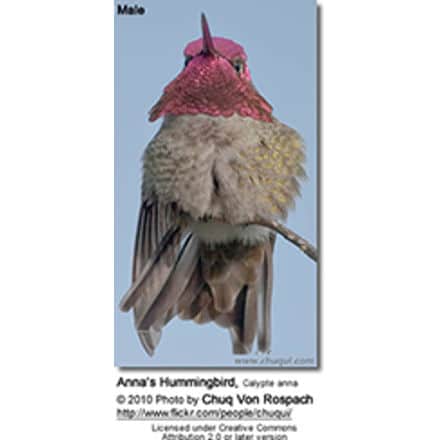
Calliope Hummingbirds, Stellula calliope – Rare / Accidental – only 1 record from November – December
The smallest breeding bird in North America. They are most easily confused with the Rufous Hummingbirds and the Broad-tailed Hummingbird.
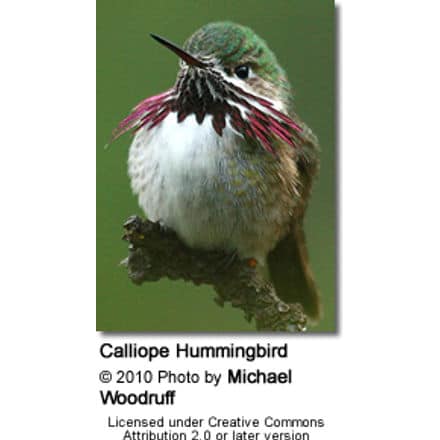
Costa’s Hummingbirds, Calypte costae – Rare / Accidental – only 1 record, November
Males can easily be identified by the glossy purple crown and long, conspicuous throat feathers that project markedly down the side of the throats, giving it an elongated “moustache” appearance. The back is metallic green.
Females have greyish-green crowns (fop of the head) and backs. The chin and the plumage below are whitish, except for some black spotting on her throat. Her flanks are buffy-colored. She has a dark tail with white tips on the outer tail feathers.
They resemble the Anna’s Hummingbirds, but the male’s gorget (throat feathers) is longer than that of the Anna’s.
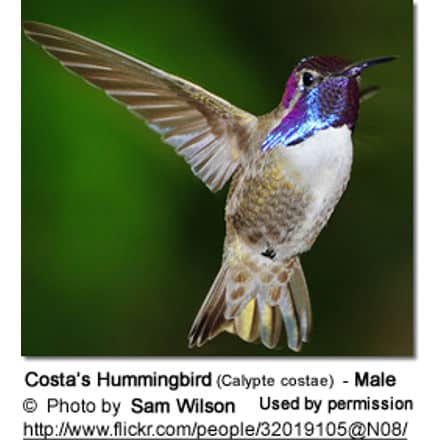
Green Violetear Hummingbirds (Colibri thalassinus) – Rare / Accidental – only 2 records from 2004 and 2005. They are mostly resident in Mexico and Central America, but some seasonal movements have been observed. They may wander north to the United States and even as far north as Canada..
Magnificent or Refulgent Hummingbirds (Eugenes fulgens) – Rare / Accidental – only 3 records, all in June – The largest hummingbird species in Minnesota.
They are nearly twice as large as any other hummingbird species found in this State, and can often be identified by their size alone.
The male has a metallic green throat and a black chest. His forehead and crown are purple and the back is dark green.
The female plumage is less bright. Her chest is solid grey. Her back and crown are olive green. Her tail feathers are pearl-grey tipped.


